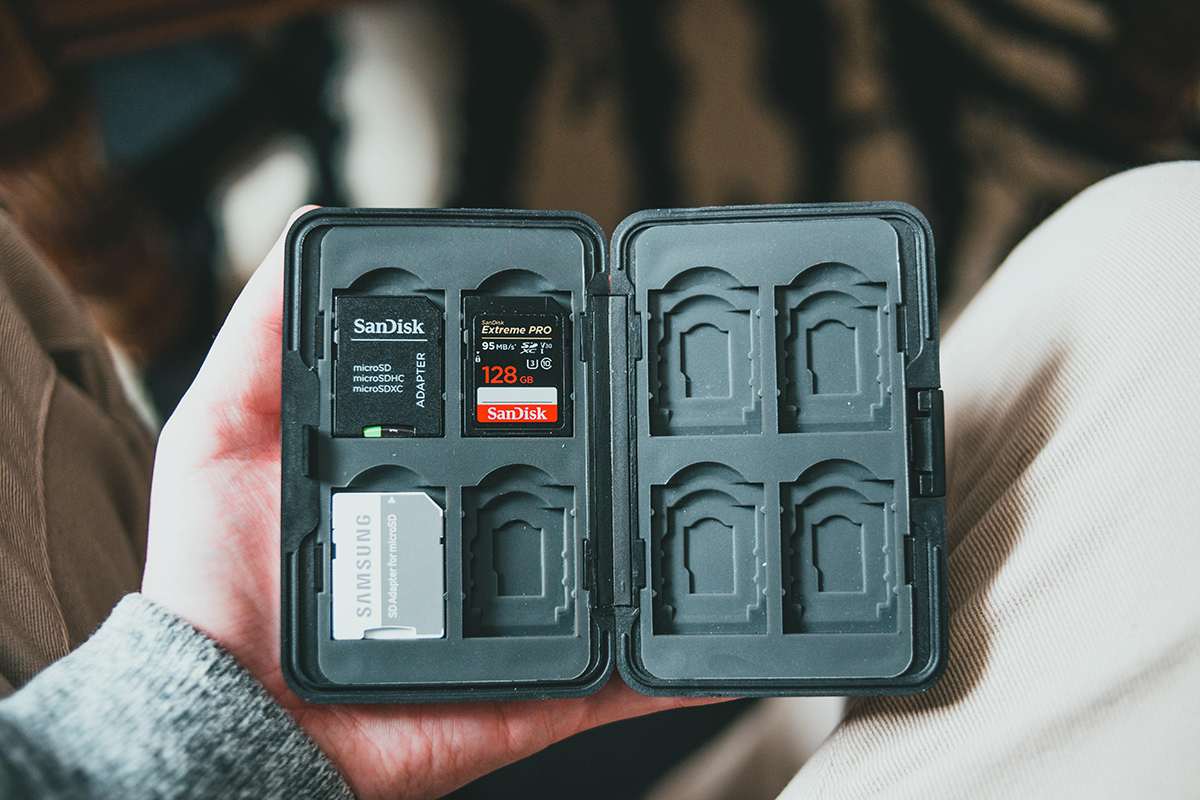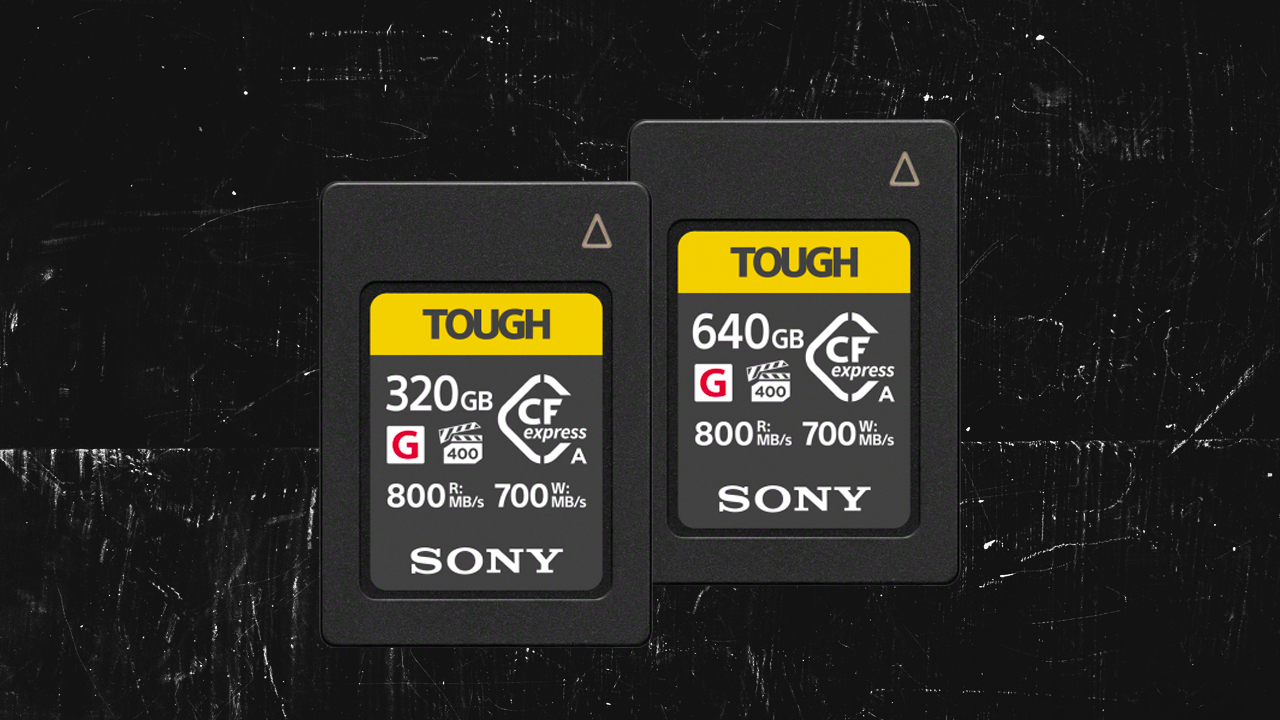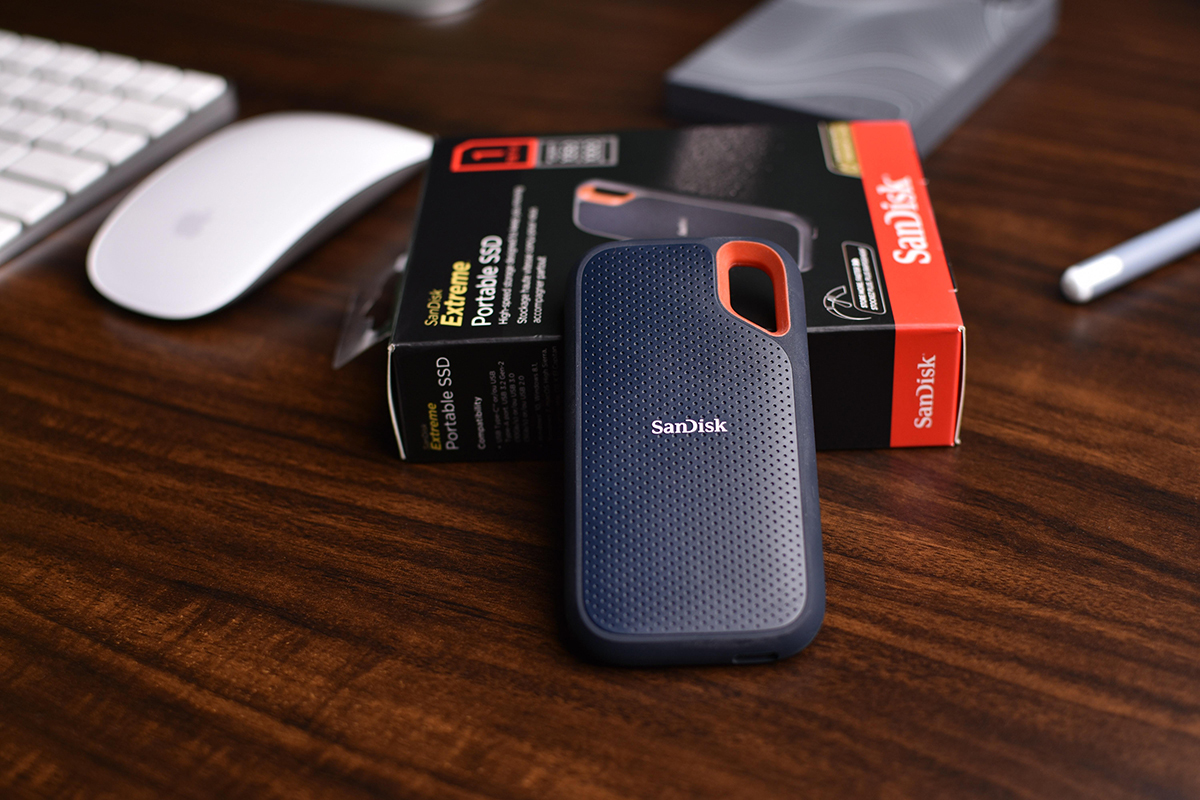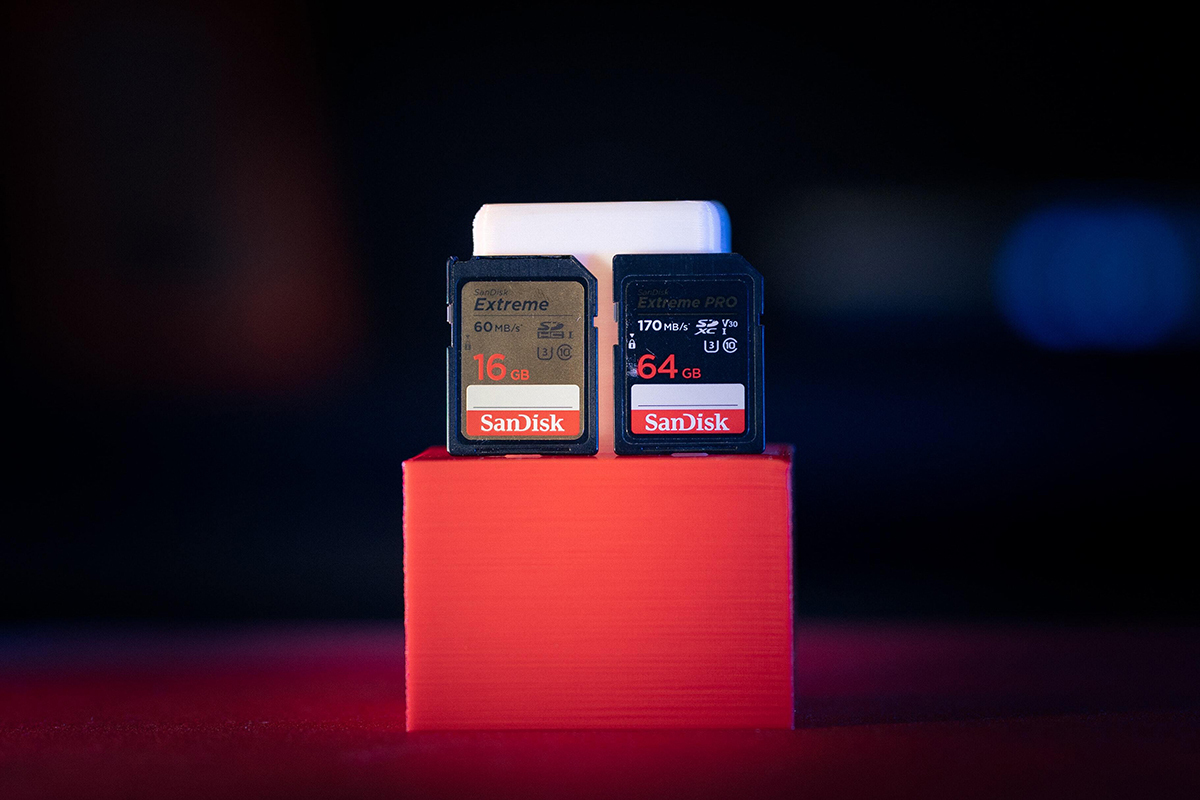Investing in proper storage solutions for your photographic practice is crucial for protecting and managing your digital assets. Having good storage tools and equipment in your camera kit will allow you to shoot for as long and as much as you’d like without worrying about running out of space. SD cards, external hard drives and cloud storage are popular storage solution options for photographers to store and protect their digital assets. Each option has its advantages and disadvantages, such as speed, reliability, capacity, and cost. By carefully considering your specific needs, you can make an informed decision and choose the right storage solution that fits your budget and workflow.

SD Cards
SD (Secure Digital) cards are the most common storage solution among photographers and videographers. They are easy to use, affordable, portable and available in various capacities. Lexar, SanDisk, Sony and Delkin Devices are some of the top SD card brands. The type of SD card you opt for will depend on your storage needs and device capabilities. SD cards come in two variations: Standard SD and MicroSD. The difference between the two is their physical size. An SD card is about the size of a postage stamp, and a MicroSD card is about the size of a fingernail. Other than size, there are no significant differences in terms of performance, compatibility, or data storage capacity between the two. Choosing between the two comes down to the specific device and its compatibility with either SD or microSD cards. SD cards are available in various sizes, speeds and capabilities. Their sizes range from 2GB to 512GB of memory. Another essential factor to consider when choosing an SD card is its speed. SD cards have different speed ratings: Speed Class, UHS Speed Class, and Video Speed Class. Speed Class Ratings on SD cards indicate the minimum sustained write speed of the card. The SD Association, the organisation responsible for setting standards for SD cards, defines the following Speed Class Ratings:
- Class 2: minimum write speed of 2 MB/s
- Class 4: minimum write speed of 4 MB/s
- Class 6: minimum write speed of 6 MB/s
- Class 10: minimum write speed of 10 MB/s
- UHS-I Speed Class 1: minimum write speed of 10 MB/s
- UHS-I Speed Class 3: minimum write speed of 30 MB/s
- UHS-II Speed Class 3: minimum write speed of 312MB/s
- Video Speed Class 30 (V30): minimum write speed of 30 MB/s
- Video Speed Class 60 (V60): minimum write speed of 60 MB/s
- Video Speed Class 90 : (V90): minimum write speed of 90 MB/s
The Speed Class Ratings are essential when choosing an SD card for applications requiring consistent and fast write speeds, such as recording high-definition video. A higher Speed Class Rating indicates a faster minimum write speed and, therefore, a better performance for such applications.

CF Express Cards
CF Express (Compact Flash Express) cards are high-speed, highly reliable memory cards used for storage in digital cameras, video cameras, and other devices. Compared to other storage cards on the market today, the CF Express offers some of the fastest data transfer speeds. This can be especially important when working with high-resolution images and video files. If you photograph in RAW or record 4K and 8K video files, the CF Express Card will be your number one storage solution. Thanks to their incredible speed, CF Express cards can improve the performance of cameras, reducing the time it takes to write large amounts of data. This is great for photographers who need to capture images and videos quickly, such as in fast-paced action or sports photography.
CF Express Cards are available in three variations: Type A, Type B and Type C. The Cf Express card types vary in PCIe data transfer lanes; as a result, their data transfer speeds and physical size varies from each type. Type A Cards have a maximum theoretical transfer speed of 1 000 MB/s, Type B cards can theoretically reach 2 000 MB/s and Type C cards can reach transfer speeds of up to 4 000 MB/s. Due to their varying physical sizes, Type A and Type B CF Express cards can be used in modern digital cameras. Type C CF Express cards are generally used in computer SSDs and gaming consoles. However, before you “add to cart”, it’s important to note that CF Express cards are one of the costlier storage options, and as previously mentioned, not all devices support the card type.

External Hard Drives
External Hard Drives are a portable and convenient way for photographers to back up and store digital assets. As photographers, we’re sure you have tonnes of photographs you’re not entirely sure what to do with. If you’ve reached maximum capacity on your digital devices, you may want to consider investing in external hard drives. They are a great way to store your data quickly and easily, and you can slip them into your laptop or camera bag and take them everywhere with you. External hard drives vary in size, capacity, and performance, with larger and faster drives capable of storing and transferring more data. Knowing what kind of hard drive to purchase will again be determined by your storage needs. How much storage do you require? How fast do you need to access your stored data? Once you can determine this, you’ll be closer to deciding which external hard drive to buy.
External hard drives can be divided into two categories: SSD (Solid-State Drive) and HDD (Hard Disk Drive). SSDs use flash memory to store data, while HDDs use spinning magnetic disks (platters). SSDs are generally faster than HDDs in accessing and transferring data due to the absence of mechanical parts in SSDs. However, it’s important to note that one may only reap the benefits of SSDs if your digital devices are compatible with the storage solution. Because SSDs have no moving parts, they are more resistant to physical shock and damage and are generally more reliable than HDDs. However, HDDs are available in larger capacities than SSDs and are generally more affordable. Regarding power consumption, SSDs typically use less power than HDDs, making them a better option for laptops and other battery-powered devices. The choice between an SSD and an HDD will depend on your specific needs and budget.

Cloud Storage
Cloud storage is a fantastic way to store all your digital assets without stockpiling your home with electronic devices and storage units. There are multiple cloud storage providers available to photographers. They include Google Drive, Google Photos, Dropbox, Microsoft OneDrive, iCloud, and more. These cloud storage providers offer varying amounts of storage for free, with a subscription option for photographers needing more storage. Cloud storage is a great way to access your digital assets without having to lug around lots of equipment or risk losing your SD or microSD cards. They are a convenient way to share images with collaborators and facilitate remote teamwork. Today many cameras are also capable of auto-syncing your photographs directly to your cloud storage service provider. However, like most things, cloud storage isn’t foolproof. If you’re sitting without an internet connection, your chances of accessing your cloud are minimal. And while data security for these cloud storage service providers is relatively sound, there is still a risk of cyber-attacks and data breaches.









